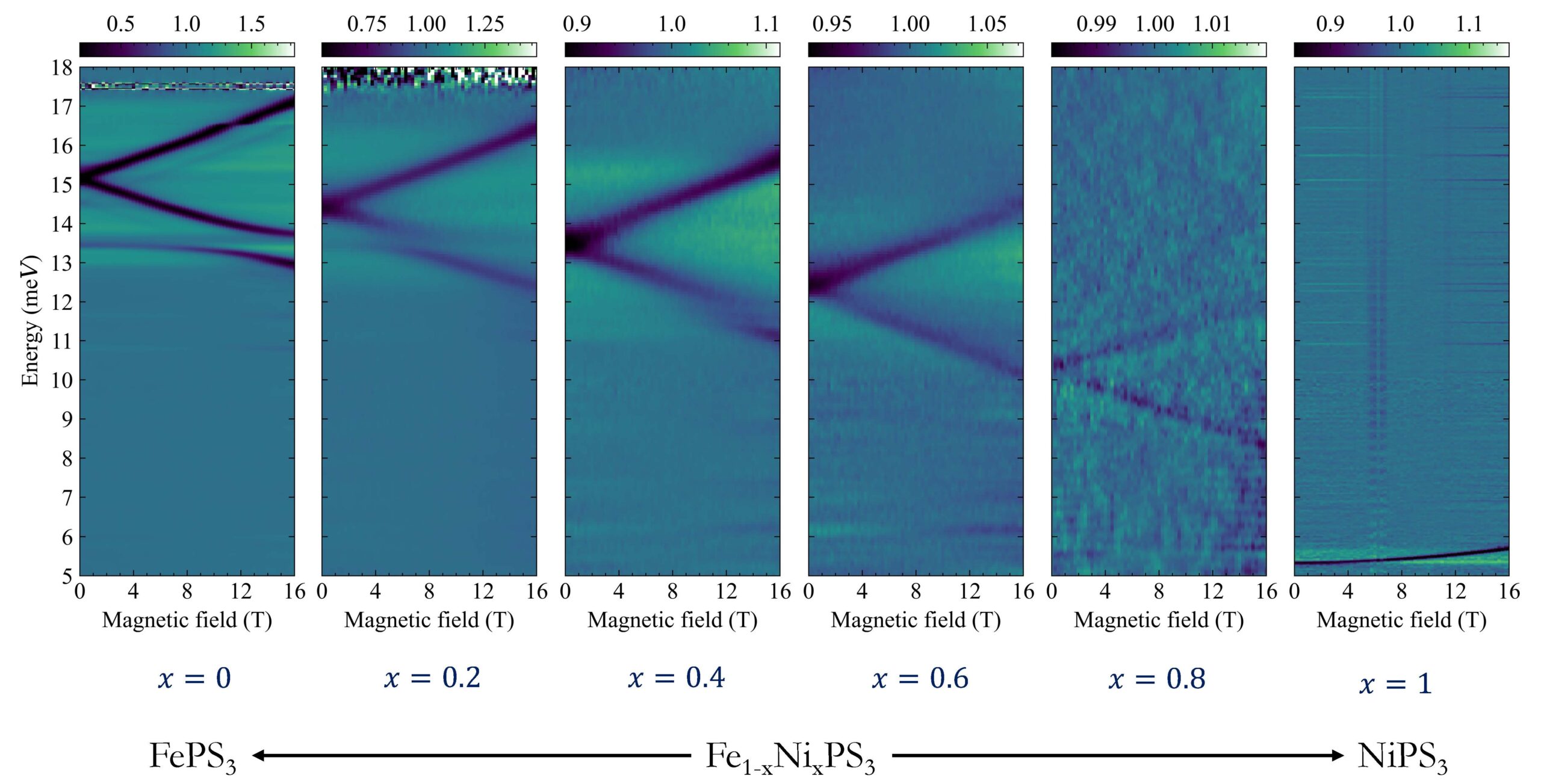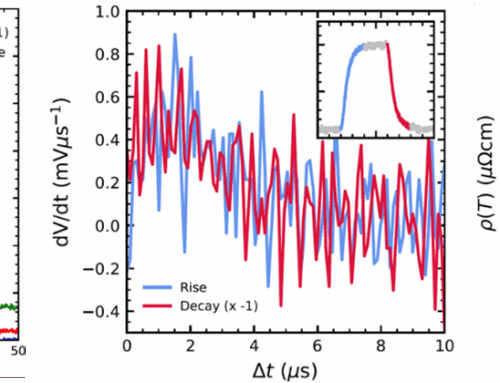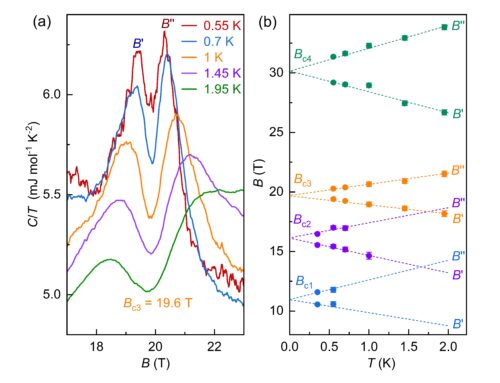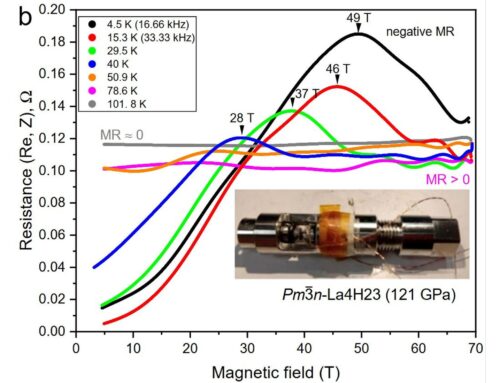Florian Le Mardelé and Milan Orlita, LNCMI-Grenoble.
Alloying stands out as a pivotal technological method employed across various compounds, be they metallic, magnetic, or semiconducting, serving to fine-tune their properties to meet specific requirements. Ternary semiconductors represent a prominent example of such alloys. They allow fine-tuning of electronic bands – in particular, the band gap – and offer the possibility to tailor semiconductor heterostructure devices, key elements in current electronics and optoelectronics. In the realm of magnetically ordered systems, akin to electronic bands in solids, spin waves exhibit characteristic dispersion relations, featuring sizeable magnon gaps in many antiferromagnets. The engineering of the magnon gap constitutes a relevant direction in current research on antiferromagnets, aiming to leverage their distinct properties for THz technologies, spintronics,
and magnonics.
In a collaborative effort between Grenoble and Taipei, we investigated alloys composed of two currently widely explored van der Waals (layered) antiferromagnets: FePS3 and NiPS3, both known for their magnon excitations in the THz frequency range. These materials share identical in-plane crystal structures, magnetic unit cells, and single-ion magnetic anisotropy directions, differing only in the magnitude and sign of the anisotropy. This implies that FePS3 behaves as an easy-axis antiferromagnet, while NiPS3 is an easy-plane system. To explore how alloying affects magnon energies, we performed antiferromagnetic resonance experiments in the THz range.
The results were straightforward to interpret, yet surprising. With increasing nickel content, the magnon energy gradually
redshifts while maintaining the characteristic splitting into two branches, both linear in the applied magnetic field, up to very high nickel concentrations (up to x ≈ 0.9). This indicates that the easy-axis antiferromagnetic order remains robust across a wide compositional range. Notably, the magnon excitation can be extensively and precisely tuned within the THz spectral range. The persistence of an antiferromagnetic resonance in these alloys also suggests that long-range magnetic order can survive even in highly disordered crystals, where magnetic atoms are randomly distributed and translational symmetry is absent.

Figure: Low-temperature magneto-transmission of Fe1-xNix PS3 alloys for several compositions plotted as false-color plots displaying antiferromagnetic-resonance absorptions typical for an easy-axis antiferromagnet (up to x ≈ 0.9), tuned across the THz range.
Tuning terahertz magnons in a mixed van der Waals antiferromagnet, F. Le Mardelé, I. Mohelsky, D. Jana, A. Pawbake, J. Dzian, W.-L. Lee, K. Raju, R. Sankar, C. Faugeras, M. Potemski, M. E. Zhitomirsky, and M. Orlita, Phys. Rev. B 110, 174414 (2024).
https://journals.aps.org/prb/abstract/10.1103/PhysRevB.110.174414
Contact: florian.le-mardele@lncmi.cnrs.fr, milan.orlita@lncmi.cnrs.fr






